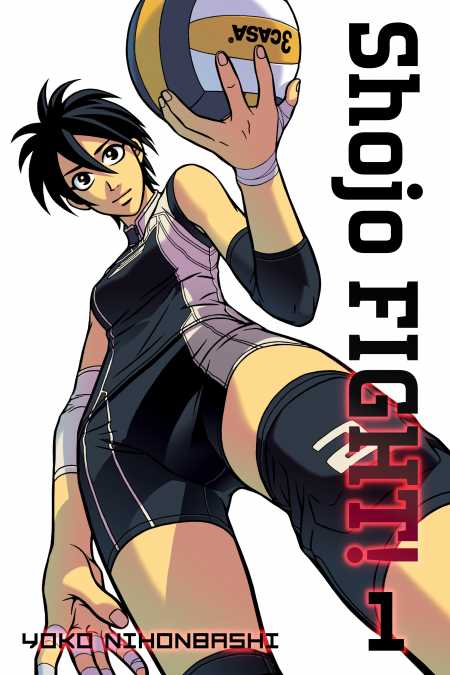By Yoko Nihonbashi. Released in Japan by Kodansha, serialization ongoing in the magazine Evening. Released in North America digitally by Kodansha Comics. Translated by Rose Padgett.
One of the benefits of the wave of digital-only titles we’re seeing in 2017 is the glut of a genre that was almost invisible until a few years ago – sports manga. Kodansha in particular has been pouring out titles devoted to soccer, baseball, soccer, rugby, soccer… and now we have women’s volleyball, with the emotionally gripping Shojo Fight!. You’d expect, given that all the male-oriented soccer manga run in either shonen or seinen magazines, that this might be a shoujo title. The title might also make you think that. But no, this runs in Kodansha’s Evening magazine, a counterpart of the mainstream Weekly Morning and the otaku-oriented Afternoon. So Shojo Fight! is reaching an older male audience. Fortunately, this does not mean that the series is filled with cheesecake. Shojo Fight! is a sports title first and foremost.
The series seems to begin in medias res, but it turns out that the first volume is about the end of middle school, and we’re setting up for high school to be the main event. Our hero is Neri, a strong but short young woman with a natural talent for volleyball and a tragic past, which keeps her mostly benchwarming. Her teammates include Koyuki, who is the school idol but whose volleyball skills don’t measure up as much, and Chiyo, who is absolutely furious at Neri and yells at her all the time in that “I am only angry because I see you have given up” sort of way. Neri is in danger of getting cut from the team, which prioritizes tall girls, and she seems to be OK with that, despite pushback from various others. One accidental injury later, however, and Neri is playing in a real game. Can she keep her emotions under control and not let the driving need to play volleyball take over?
It seems to be a sort of cliche to mention that the art in this looks a bit like OEL, so I will say that as well. More to the point, though, the art fits the subject matter. The volleyball matches that we see are straightforward, lacking the ‘cool’ art that we see from titles such as Haikyu!, but being quite understandable and easy on the eyes. I also really liked Neri’s facial expressions, particularly when she’s traumatized in the second half of the book. That dazed, emotionally hollow look makes your heart ache, and you’re grateful for her future coach (I assume) from coming by to stop her making a choice that would be terrible. I’d mentioned the lack of cheesecake: Neri’s male friend Shigeru is a massage therapist, and when Neri strains her back he massages her – in the girl’s bathroom stall, as student’s aren’t supposed to fraternize. It’s quite innocent, but turns into a nasty rumor that gets people punished, and the art shows both the innocent act while signposting how it’s going to be viewed.
It looks like the cast is going to expand vastly in the second volume, not unusual with sports titles. There are some eccentrics in the high school team, and I have to admit the idea of a barbed-wire volleyball net made me laugh. The series isn’t perfect (some of the exposition about the tragedy was really shoehorned in), but it was highly enjoyable, and I can’t wait for future volumes to see if Neri comes into her own as a player.

